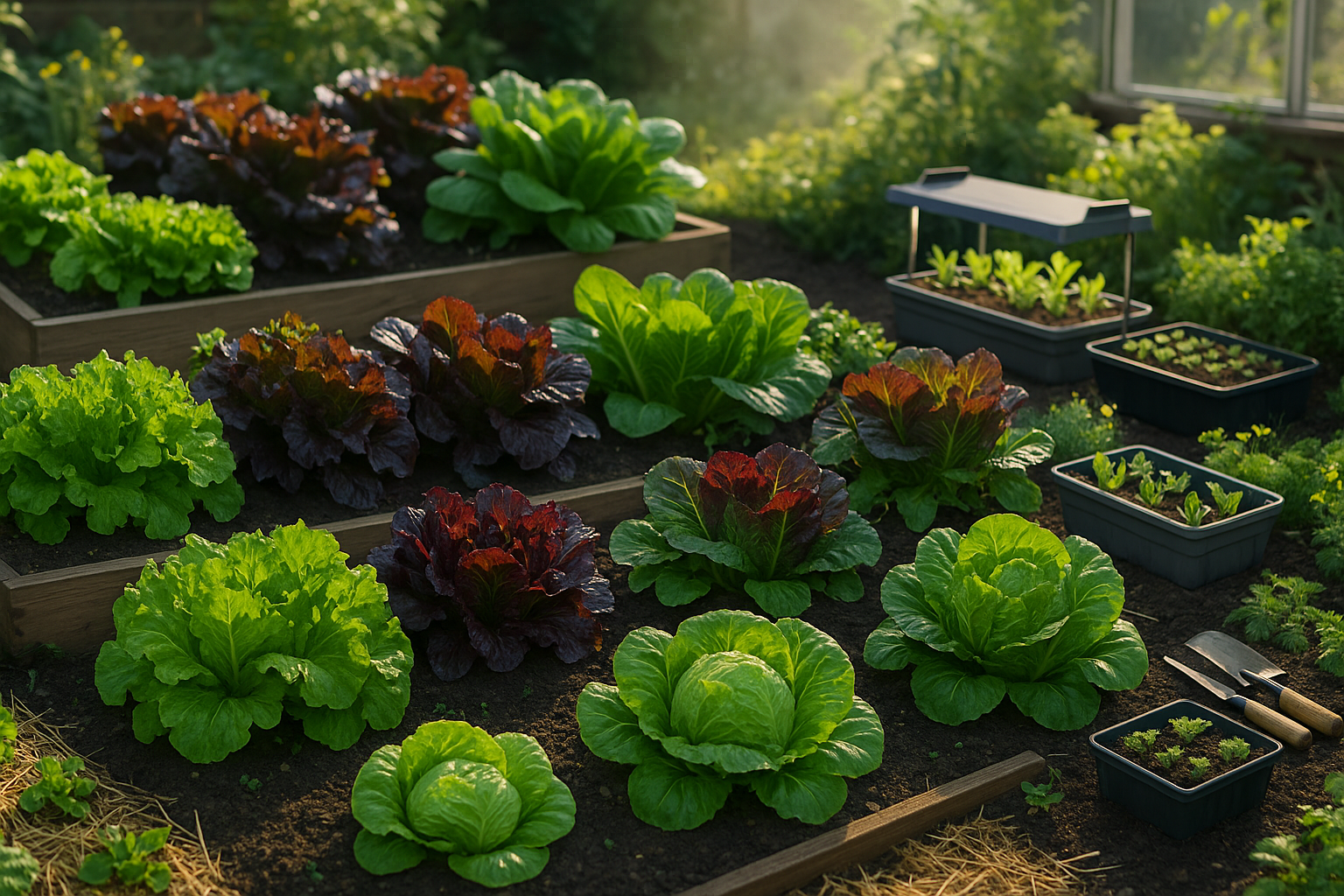Why Grow Organic Lettuce at Home?
Growing organic lettuce at home offers a host of benefits that go far beyond just having fresh greens on your plate. By skipping chemical fertilizers and pesticides, you’re serving up a healthier salad for your family—packed with nutrients but free from potentially harmful residues.
Homegrown lettuce also helps shrink your environmental footprint. There’s no fossil fuel used to transport produce from distant farms, and no runoff of harsh chemicals into waterways. It’s a win for your wallet, too; after a small initial investment in seeds and soil, you’ll notice the savings compared to buying pricey organic mixes at the market.
Plus, nothing beats the crispness and vibrant taste of just-picked lettuce, which starts losing flavor and nutrients the moment it’s harvested commercially. With methods like container gardening or indoor grow lights, you can keep your supply going year-round, ensuring constant access to greens no matter the season.
Home gardens also make food safety more manageable—you know exactly how your lettuce is grown, avoiding recalls and contaminants sometimes found in store-bought produce. Lastly, growing lettuce at home is a fantastic way to get the whole family involved; kids love to watch seeds sprout and grow, which can nurture healthy eating habits and a deeper connection to where food comes from.
It’s a simple, satisfying step toward a healthier lifestyle and a more sustainable world.
Choosing the Right Lettuce Varieties
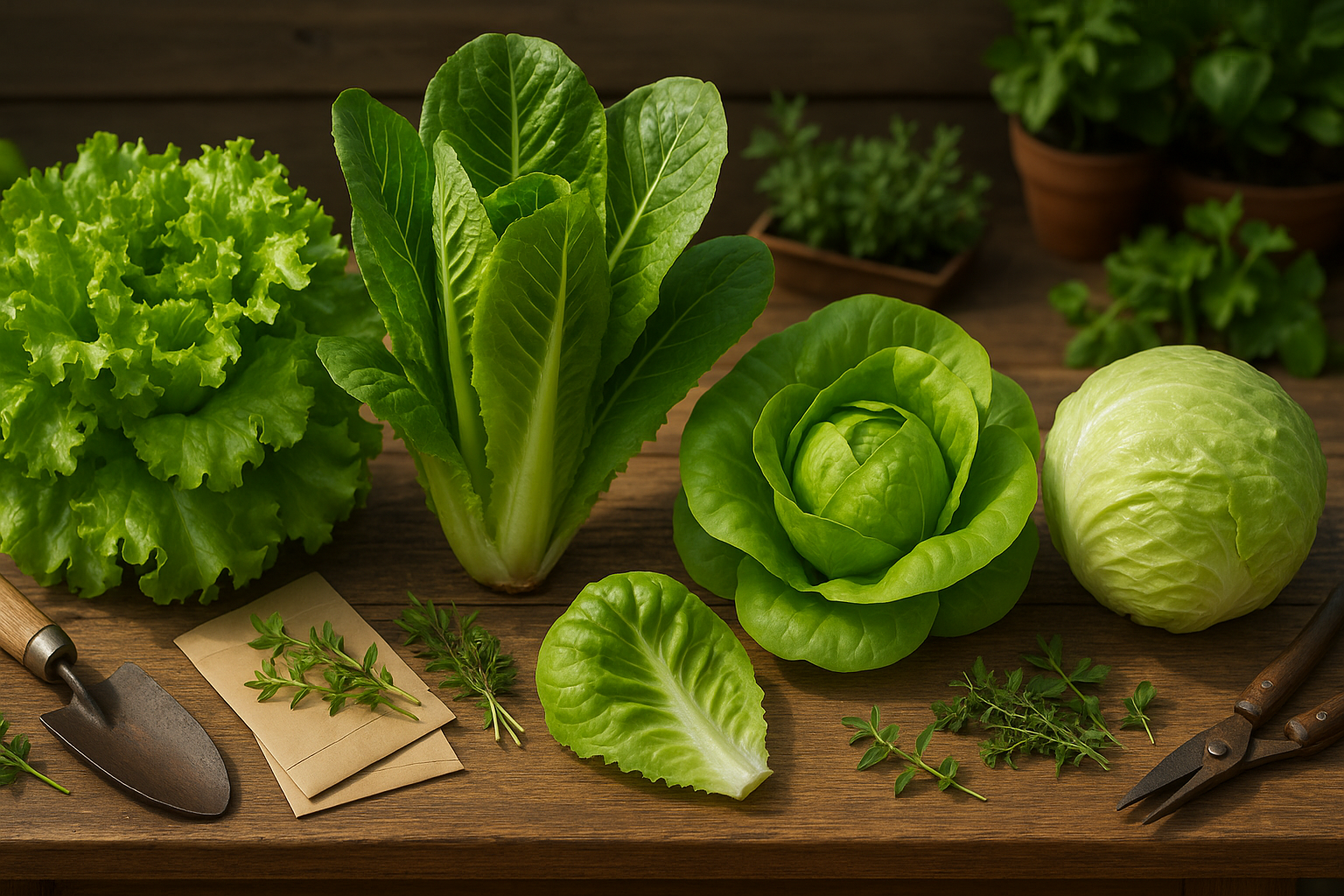
When it comes to growing your own lettuce, understanding the main types—leaf, romaine, butterhead, and crisphead—can make all the difference in your garden’s success.
Leaf lettuces, like ‘Black Seeded Simpson’ or ‘Red Sails’, are among the easiest for beginners and offer quick, cut-and-come-again harvests. Romaine, with its sturdy crunch and upright leaves, thrives in moderate temperatures; popular choices like ‘Parris Island Cos’ are both tasty and relatively resistant to disease. Butterhead varieties, such as ‘Buttercrunch’ or ‘Boston’, provide tender, sweet leaves and good bolt resistance, making them a great pick for spring or early fall planting. Crisphead, including the classic ‘Iceberg’, prefers cooler climates and can be more challenging due to its slow growth and susceptibility to pests.
When choosing which to grow, it pays to check which varieties perform best in your local climate and season. For hot summers, look for bolt-resistant types, and for cooler regions, seek lettuces tolerant to cold snaps. Beginners will find disease-resistant cultivars especially rewarding—look for those marked as resistant to downy mildew or lettuce mosaic virus.
Mixing types in the same bed not only maximizes your chances for a steady harvest (since different lettuces mature at different rates) but also turns your salads into a flavor adventure with a mix of colors, shapes, and textures. By rotating varieties, you’ll keep pests guessing and your plate full for weeks on end.
Planning & Preparing Your Organic Lettuce Garden
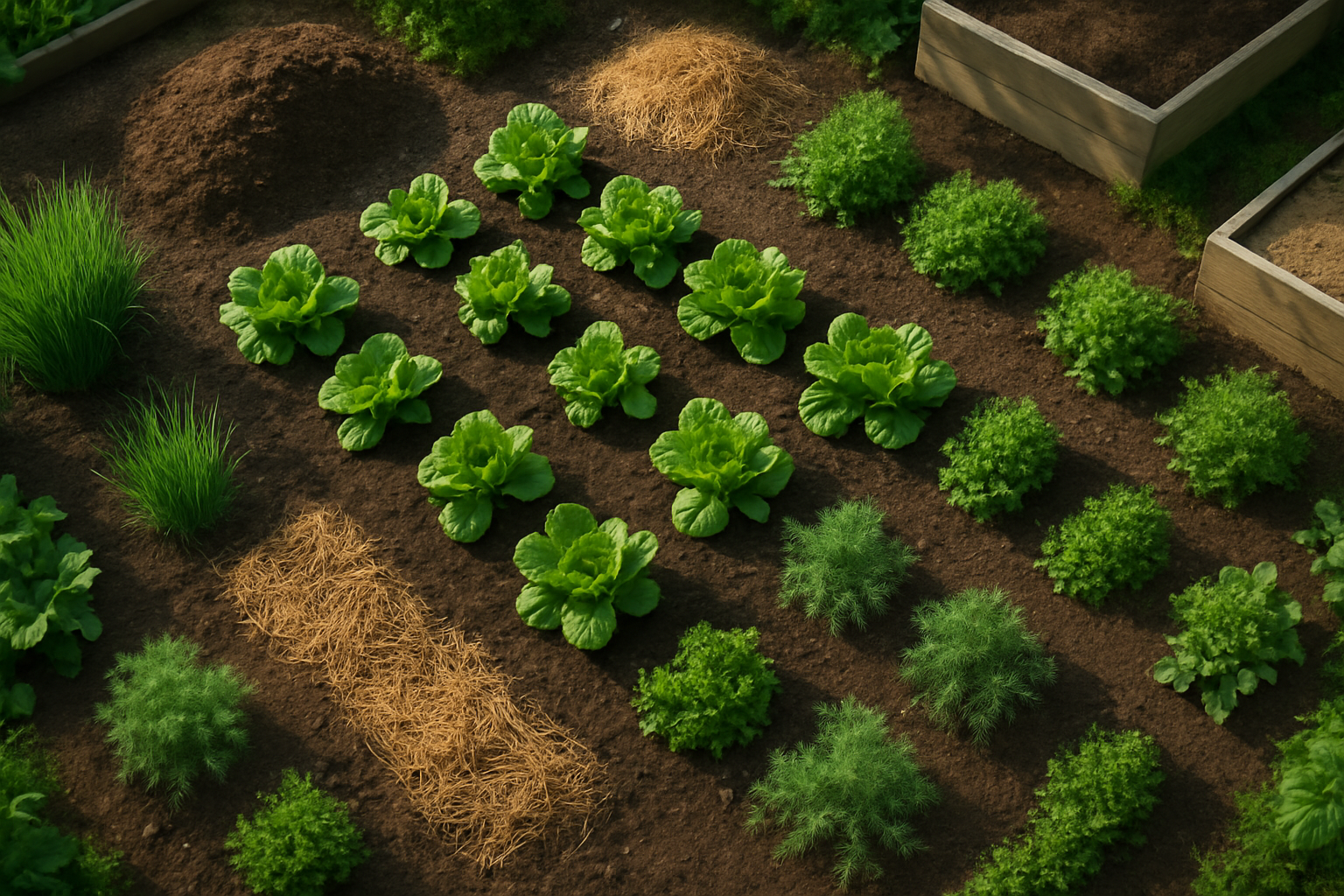
Choosing the right spot for your organic lettuce garden is the first step toward a thriving, healthy crop. Lettuce grows best in areas that receive at least 6 hours of morning sunlight but benefit from some afternoon shade—this helps prevent bolting and keeps the leaves crisp.
Look for a location with well-drained, loose soil; avoid heavy clay or constantly wet spots, as lettuce roots don’t like sitting in water. If your garden soil is lacking, opt for raised beds or large containers, which allow you to create ideal growing conditions.
For truly organic soil preparation, mix in plenty of well-aged compost or leaf mold a few weeks before planting to boost fertility. Consider adding natural amendments like worm castings or a sprinkle of blood meal for extra nitrogen. When filling containers, choose organic potting mixes and blend in compost for nutrient-rich results.
As you design your garden layout, space lettuce plants 6–12 inches apart, depending on the variety, and plan rows 12–18 inches apart to promote good air circulation—this is key to preventing fungal diseases and encouraging robust growth.
Arrange beds so you can easily reach all areas for weeding and harvesting. Grouping lettuce with compatible herbs like chives, dill, or onions can naturally deter pests like aphids and cutworms.
Finally, practice crop rotation each season by not replanting lettuce in the same spot year after year. Rotate with legumes or root crops to disrupt pest cycles and maintain healthy soil. Thoughtful planning at the start ensures an abundant, low-maintenance organic lettuce harvest throughout the season.
Planting Lettuce Without Chemicals
Growing lettuce without chemicals is simple and rewarding, especially when you start with thoughtful seed-sowing techniques. You have two main options: direct sowing seeds right into the garden soil or starting them indoors for an early jump on the season.
For a continuous supply, stagger your plantings—sow a few rows every two to three weeks so you’ll always have fresh leaves ready for harvest.
When sowing directly, sprinkle seeds lightly over moist, loosened soil, then gently press them in with your hand or a board. Lettuce seeds need light to germinate, so don’t bury them deeply.
To skip measuring and achieve even spacing, seed tapes are a clever, organic-friendly tool. They’re strips of biodegradable paper with seeds already spaced out; just cover with a thin layer of soil and water.
If starting indoors, use shallow trays with seed-starting mix—keep it lightly moist, not soggy, and place trays in a bright but cool spot. Lettuce prefers cooler conditions, so sow seeds as soon as the soil can be worked in spring or under grow lights indoors about four to six weeks before your last frost date.
After seeds sprout, thin the seedlings to about 4–6 inches apart so each plant has room to grow and good airflow, which helps prevent disease naturally.
For strong, chemical-free growth, water gently and evenly—aim for consistent moisture without waterlogging. A fine mist from a spray bottle or a soft hose setting works well to settle seeds without washing them away. Organic mulches like straw can help keep the soil moist and cool, reducing weeds and conserving water.
By combining these natural methods, you’ll enjoy healthy lettuce without the need for synthetic chemicals.
Caring for Organic Lettuce
Properly caring for organic lettuce means paying close attention to watering, feeding, and ongoing garden maintenance. Lettuce loves consistently moist soil but dislikes soggy roots, so aim to keep the top inch of soil evenly damp, not soaked. Drip irrigation or a soaker hose works best, as overhead watering can splash soil onto leaves, increasing the risk of disease.
Feed your lettuce beds every two to three weeks with organic solutions like compost tea or diluted fish emulsion—both provide a gentle nutrient boost without harming fragile seedlings. Sprinkling worm castings around the base of plants helps improve soil structure and offers rich, slow-release nutrients that lettuce roots love.
For maintenance, add a two-inch layer of mulch such as straw or shredded leaves to help the soil retain moisture, suppress weeds, and regulate temperature. Hand weeding is essential because lettuce roots are shallow and easily disturbed by tools or heavy cultivation; gently tug weeds to avoid damaging your crop.
Encourage soil health by rotating lettuce beds each season, and avoid synthetic fertilizers or pesticides that disrupt beneficial microbes. Keep an eye out for pale or yellowing leaves, which often signal nitrogen deficiency—an easy fix with an extra dose of compost. If growth stalls or leaves develop burnt edges, your soil may need potassium, which can be boosted sparingly with kelp meal or wood ash.
Remember, healthy organic lettuce starts with healthy soil, so test your ground each season and adjust feeding as needed. By watering wisely, feeding organically, mulching, and fostering rich soil life, you’ll enjoy vigorous lettuce, fewer pest issues, and the delicious taste only homegrown greens provide.
Natural Pest and Disease Control for Lettuce
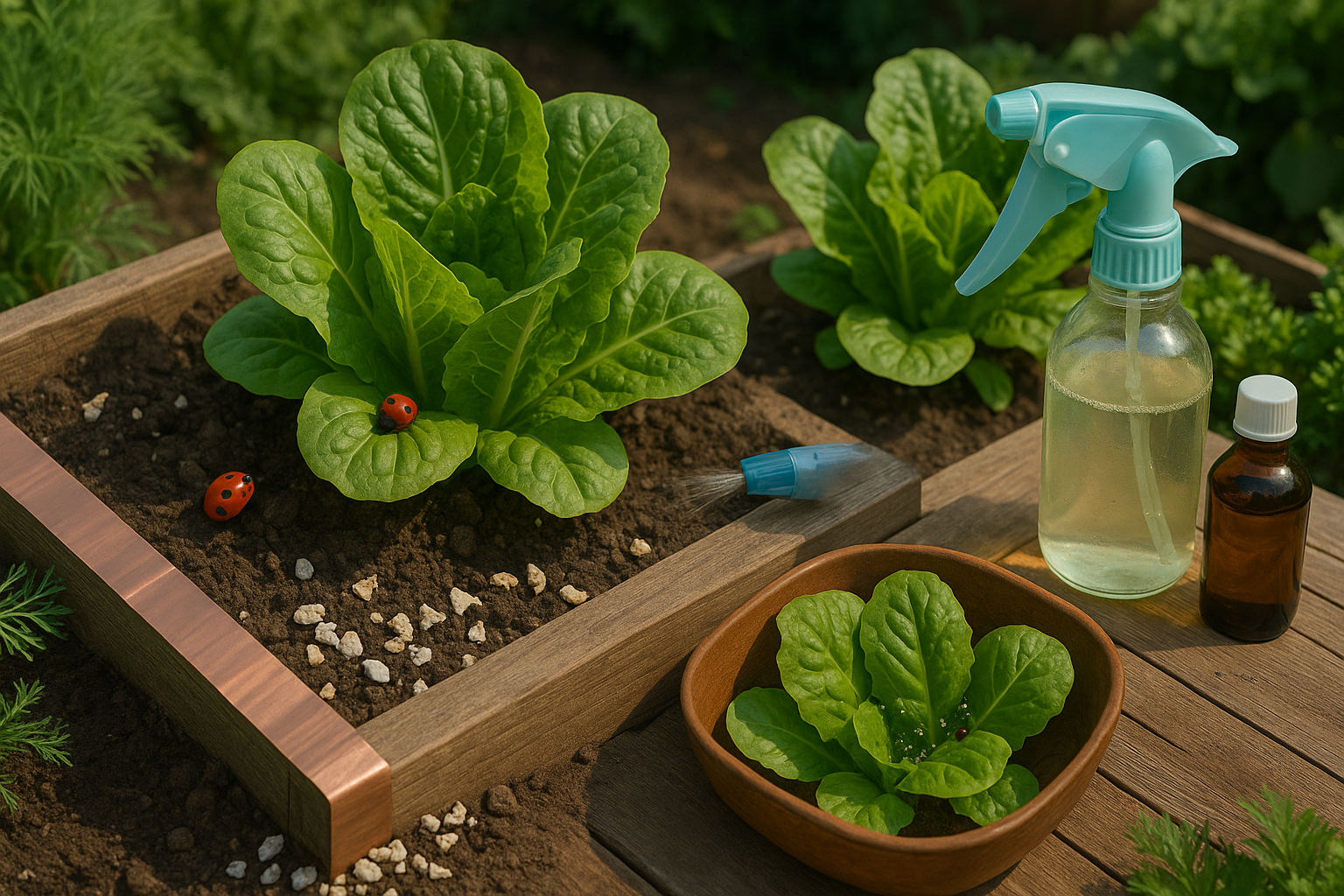
Lettuce is a delicious and rewarding crop, but it can attract a variety of common pests and diseases. Gardeners need to stay vigilant and use natural, sustainable methods to keep them in check. Many lettuce growers struggle with pests like slugs, aphids, and snails—fortunately, these can all be managed without harsh chemicals.
Managing Common Pests
For slugs and snails, try setting up physical barriers such as copper tape or crushed eggshells around your garden beds. These create uncomfortable surfaces that deter these slimy intruders. Hand-picking them at dusk, when they are most active, can also help reduce their numbers.
Aphids can be controlled by encouraging beneficial insects like ladybugs and lacewings, which naturally prey on them. Alternatively, spraying affected leaves with a gentle soapy water solution (one teaspoon of mild dish soap in a quart of water) disrupts aphids’ waxy coatings and helps manage outbreaks.
Preventing Diseases
Preventing “lettuce blight” and other diseases begins with solid gardening practices. Rotating crops each season keeps soil-borne pathogens in check, while providing plenty of space between plants improves airflow and helps dry out foliage, discouraging the spread of mildew and fungi. Choosing lettuce varieties labeled as disease-resistant is another smart strategy for long-term protection.
Additional Tips
For an extra line of defense, a homemade organic spray like neem oil—mixed and applied according to the label—can help combat both insects and fungal problems. However, these measures work best when paired with proactive monitoring: regularly inspect your lettuce for early signs of pests or yellowing leaves, and promptly remove any fallen debris to keep the growing area clean.
A tidy, well-observed garden is your best insurance against serious infestations, making it easier to enjoy healthy, homegrown lettuce throughout the season without relying on synthetic chemicals.
Harvesting and Enjoying Your Organic Lettuce
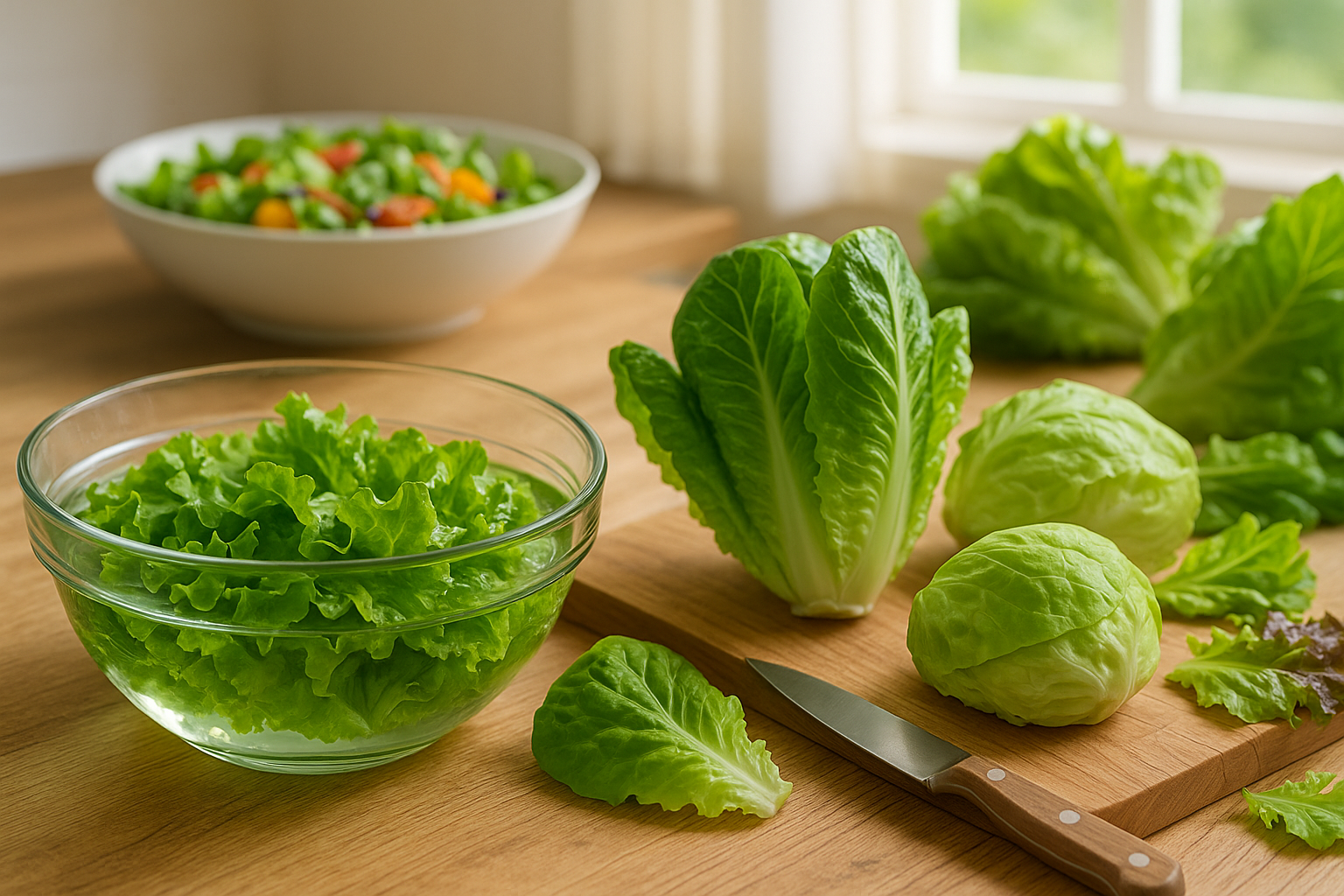
Knowing exactly when to harvest your organic lettuce ensures the freshest, tastiest greens for your table. For loose-leaf varieties, the best time to pick is when the leaves reach 3 to 6 inches long and feel tender. Simply snip the outer leaves, leaving the center intact so the plant keeps producing—a technique known as “cut-and-come-again.”
Romaine and butterhead lettuces are ready when their heads look compact but still slightly loose, and the leaves are crisp but not yet bitter. Use a sharp, clean pair of scissors or a knife to avoid bruising, and cut the leaves in the morning when lettuce is most hydrated and crisp.
After harvest, gently dunk the leaves in cold water to remove soil, then spin or pat them dry. For storage, wrap washed leaves in a clean kitchen towel or paper towel and place them in a breathable container or perforated bag in your fridge’s crisper drawer to maintain freshness for up to a week—no need for preservatives.
Don’t forget to enjoy the rewards: toss your crisp lettuce into salads with seasonal veggies, pile it on sandwiches, or layer it in wraps. Growing, harvesting, and enjoying your own organic lettuce turns every meal into a celebration of freshness and a personal farm-to-table experience for the whole family.
